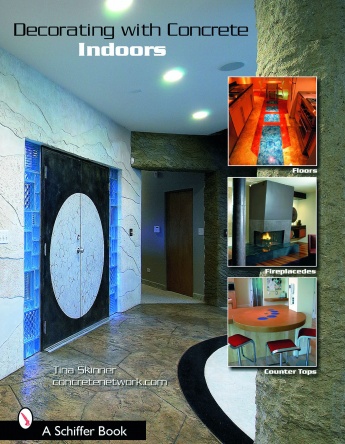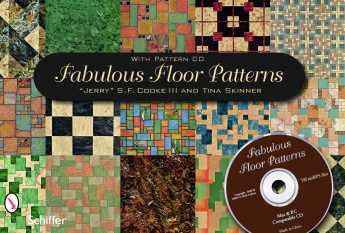An Update on the Sports Flooring Market with Sika-Dritac’s Kent Berheide

Rubber sports flooring has evolved to become increasingly dense, durable, slip-resistant, and high impact shock absorbent.
Photo: Dritac.

With the rise of the interlocking tile format, nearly anyone can install their own fitness flooring, making for a product that has never been more accessible or better performing than it is today.
Photo: Dritac


The growing demand for gyms and sports in the U.S. is expected to drive the sports flooring market in the United States. Estimates vary, but the U.S. sports flooring market is expected to reach $5.8 billion by 2031. What’s fueling demand? An inclination toward outdoor and indoor sports and a surge in the number of the health-conscious population. This is coupled with the introduction of new sports floors utilizing new materials and technologies. Floor Trends connected with Kent Berheide, rubber flooring products representative at Sika-Dritac ,to learn more about the market.
Floor Trends: What’s the status of the sports flooring market?
Berheide: The size of the sports flooring market has steadily increased in recent years both domestically and internationally, as fitness and athletic-based lifestyles have become ever more popular. Rubber sports flooring in particular has proven to be among the fastest-growing floor categories. The popularity of this type of sports-focused flooring sky-rocketed during the initial stages of the pandemic as many folks looked to supplement workouts into home gym spaces. Online sales rose dramatically, and the home-based gymnasium entered a whole new level. Sales for sports flooring haven’t looked back since.
Homeowners have been installing personal gyms at a higher rate than ever before, while many businesses have seen the value in adding fitness facilities to their properties.
This durable technology, engineered for high impact, is equally well suited for large-scale commercial installations and small DIY projects. Homeowners have been installing personal gyms at a higher rate than ever before, while many businesses have seen the value in adding fitness facilities to their properties. For both kinds of projects, rubber sports flooring has been a superior solution, due in part to how easy it is to install and how much shock absorption it offers to make the fitness experience an easier one on the muscles and joints.
Despite recent supply chain and raw material challenges permeating the industry, most noteworthy sports flooring production plants are currently experiencing market growth of double-digit percentages. This footprint continues to expand as the applications of sports flooring become more varied. In addition to sports and fitness areas, this flooring type has seen greater usage in veterinarian clinics, cafeterias, healthcare centers, and a variety of other high-traffic areas. As a highly diverse and customizable product, with options across a wide range of thicknesses and colors, the rubber sports flooring market is primed to continue growing for years to come.
Floor Trends: Have the projects being specified changed since the pandemic?
Berheide: A significant portion of the growth in the sports flooring market in recent years can be attributed to trends brought about by the pandemic. Due to so many public and commercial facilities being temporarily closed or restricted, consumers began to implement home gyms at an unprecedented rate. Additionally, Americans have become more health-conscious than ever before. Eating right and maximizing peak individual performance has become a focal point and mainstay of American society. Rubber sports flooring in both roll and interlocking tile format has proven to be the most user-friendly option for DIY installs, affording consumers a cost-effective and safe way to bring their fitness lifestyle into their home. Basements and garages often feature an existing floor or substrate that is hard, unyielding, and altogether ill-suited for working out. The onset of rubber interlocking tile sports flooring has proven to be an exceptionally accessible solution that can be readily tailored to fit the budget, needs, and design of nearly any home installation.
Floor Trends: What trends are you seeing in this market?
Berheide: Just as home gyms are becoming more prevalent, so too are large gymnasiums and fitness centers experiencing an increase in attention and funding. More and more schools and businesses understand the value of installing exercise facilities for their students and staff. Public and private schools are one of the biggest growth sectors presently, as fitness centers are now a point of competition between schools hoping to attract student-athletes. Rubber sports flooring accommodates this trend better than nearly any other floor covering, as it proves to be easily customized to represent any brand or theme, while providing the performance attributes demanded by a full spectrum of physical activity. With a greater number of people working remotely than ever, these establishments hope to attract people back into the workplace, and fitness centers have been to be an excellent area to invest in.
Floor Trends: Where is technology headed for rubber sports flooring?
Berheide: The engineering of rubber sports flooring has improved greatly over the years in every category. This solution is generally cleaner now than ever before as it’s produced from up to 100% post-consumer waste. The process of removing debris such as wires and stones during manufacturing has reached a point of zero tolerance. At the same time, rubber sports flooring has evolved to become increasingly dense, durable, slip-resistant, and high impact shock absorbent. This new standard of toughness comes without sacrificing quality of life for the consumer, as maximizing comfort underfoot is another focal point of the latest rubber sports flooring products to hit the market. Finally, with the rise of the interlocking tile format, nearly anyone can install their own fitness flooring, making for a product that has never been more accessible or better performing than it is today.
Looking for a reprint of this article?
From high-res PDFs to custom plaques, order your copy today!










